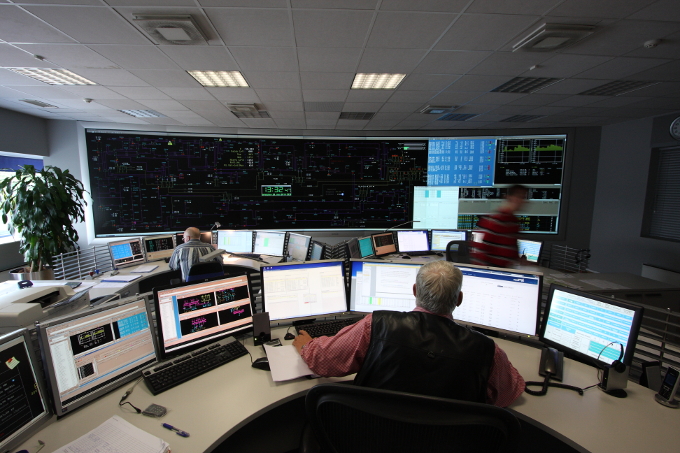Control centre
The main tasks of the Elering control centre are the planning of Estonian electricity system’s operation and its real time management.

Planning of operation includes the coordinated control of permissible operation of the electricity system or analysis of operation security and bringing the planned operation into conformity with permitted limits, if necessary, while plans and forecasts are also drafted for the control phase. Plans and forecasts drafted during planning of operation must meet the requirements of reliability and supply, ensure optimum losses and enable maximum possible cross-border transmission capacity.
Operative planning of the operation of the electricity system is followed by the process of control of operation in real time, which takes place round the clock and is ensured by three dispatchers. Control in real time must ensure a safe and reliable operation of the electricity system in real time. Tasks of the dispatchers include the correction of deviations from the planned balance sheet plans in real time, ensuring a high-quality electricity supply for the customers of the transmission network, management of directing the equipment of transmission network to maintenance, operation and reserve, identification and correction of failed and emergency operations, organisation of cooperation with customers, and informing system administrators of neighbouring countries and market participants of any changes in cross-border transmission capacities.
In order to ensure the successful fulfilment of these tasks, the control centre is using a control system (SCADA). The implemented control system enables the dispatchers to monitor the position, condition, and measurement data of the equipment in all approximately 150 substations of the transmission network and to control their operation. The data of partners (e.g. the transmission networks of Latvia, Lithuania, Russia, Belarus, Finland) and customers (e.g. wind parks, power plants, distribution network companies), which are needed for controlling the operation of the electricity system, also reach this control system.
However, SCADA is just one of several technical tools providing support to the employees of the Elering control centre for ensuring the reliable operation of the Estonian electricity system. Additionally, among other systems, the following IT applications help the employees of the Elering control centre to perform their tasks:
- SCADA/EMS – a complex of programmes integrated with SCADA, assessing the condition of the electricity system (e.g. fulfilment of N-1 criterion);
- load forecast system;
- production forecast system of wind power plants;
- balance sheet administration software (including data of cross-border transmission capacities, balance sheet plan, and offers and use of capacity reserves);
- administration system of interruptions and switching of power equipment;
- electronic operative journal;
- web application for transmitting urgent market messages (UMM);
- application for forecasting network losses;
- application of day-in-advance and daily trading on electricity stock exchange (for purchase and sale of network losses);
- application for determining distance of short circuit spot;
- applications for remote access to direct current connections between Finland and Estonia;
- applications for remote access to emergency reserve power plants.
Major changes in the operation of the Elering control centre took place with the addition of direct current links EstLink 1 and EstLink 2 between Estonia and Finland. Opening of the market region of Nordic electricity stock exchange in Estonia in 2010 brought along additional activities in the administration of cross-border transmission capacities and enabled starting the purchase of electricity needed to cover network losses from electricity stock exchange in 2013.
In 2014, the emergency reserve power plants of Elering were completed near Kiisa. Both power plants are automatically activated and controlled from the Elering control centre via SCADA, and these plants are used in the case of failure in the Estonian electricity system or neighbouring electricity systems.
Due to the importance of transmission of electric energy as a vital service it is necessary to minimise the possibility of major failures of electricity supply in the transmission network. Therefore, the major tools are duplicated in the control centre. Dispatchers dealing with the control of operation of the electricity system in real time must be able to substitute other dispatchers working in the same shift as well, if necessary. A SCADA backup server has been implemented and reserve communication channels have been installed.